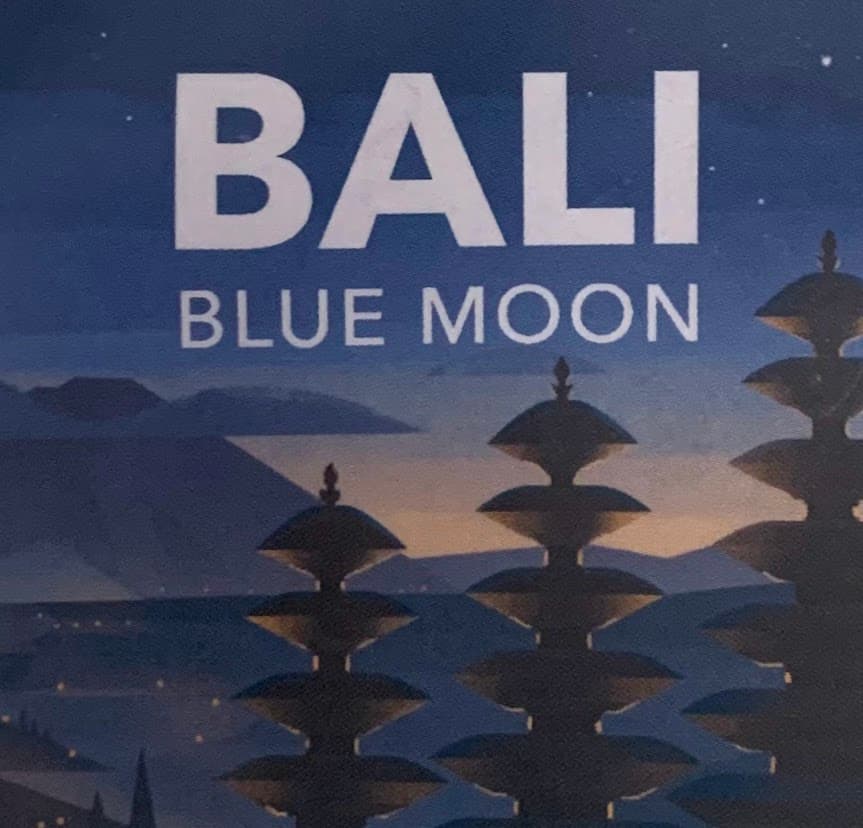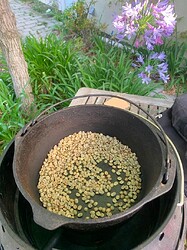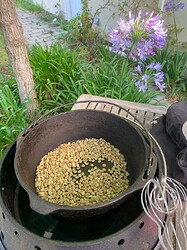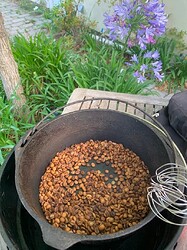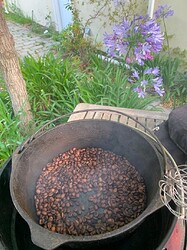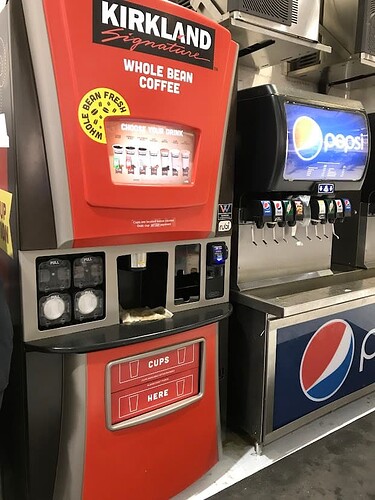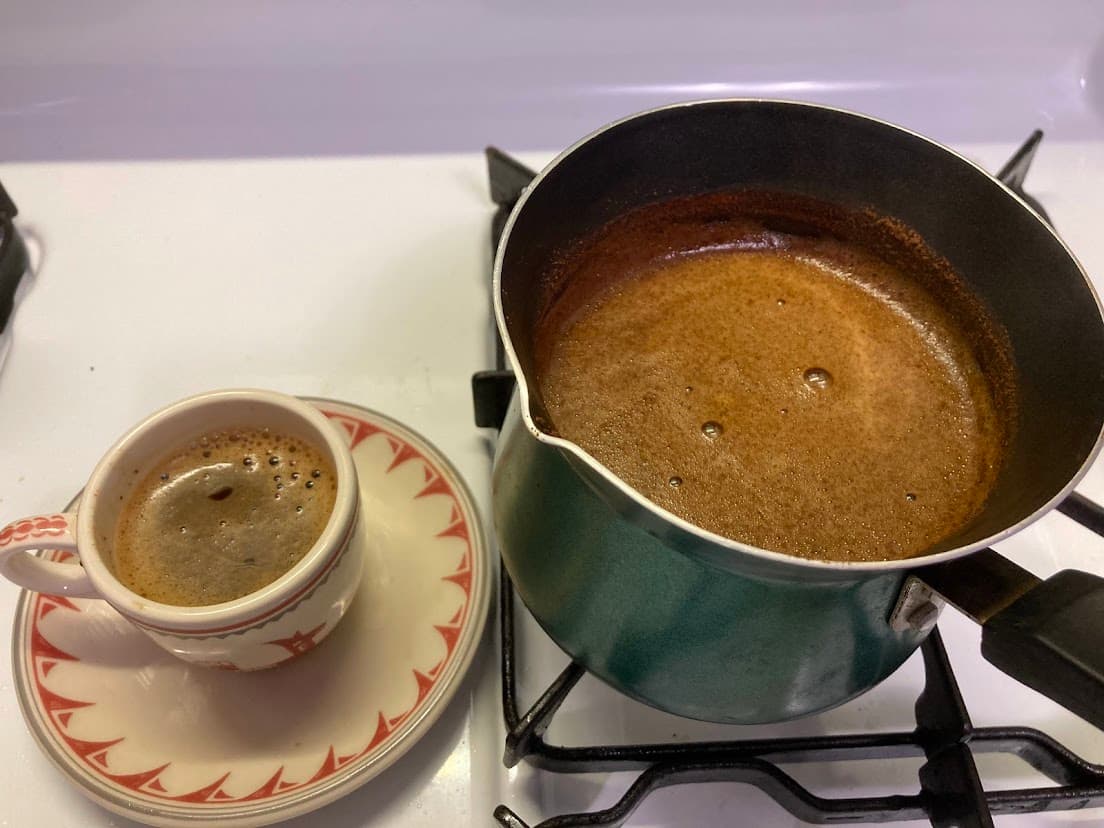My writing can be split between work I do for my job and noodling around with ideas for my own selfish reasons. I have a lot of drafts that never quite get done because I lose interest and move on to other things. Readers have told me they find my personal writing valuable to them, however. Thinking about my audience (beyond myself) seems a worthwhile change in my personal writing. One sign of that change is that I opened a profile on Ko-fi, which is a quirky platform to accept donations using the conceit that people are buying them a coffee.
This article explains my writing process and how I go about brewing coffee. There’s a good chance it will do neither particularly well, but I bet nothing like it has ever been written before. Revel in the novelty!
Origin
Where coffee comes from matters a good deal. Kona coffee, grown on the western slope of Hualālai volcano on the island of Hawaiʻi, tastes better than whatever’s cheap in the average grocery store. I can usually taste something unique about coffee that comes from a single geographic location.[1] Factors include:
- Soil (Volcanic tends to be best.)
- Altitude (Higher is usually better.)
- Climate (Tropical but not swampy.)
- Species ( Coffea arabica is generally superior to coffea robusta.)
- Cultivar (Hawaii alone has at least 6 varieties.)
- Bean quality (Fewer defects are better.)
- Bean size/type (Some coffee fruit have a single bean, called a peaberry, which are considered better than the normal twin beans.)
- Processing methods (Different locations have developed unique methods of separating out the bean from the fruit.)
After it’s been processed, green coffee can be stored for years without losing much flavor. At this point it may be shipped around the world. I have fond memories of Kona coffee when I visited the islands, but it’s possible to get nearly as good coffee from other parts of the world. This morning I opened a bag of Bali Blue Moon coffee sold by Coffee Bean & Tea Leaf, which is exceptional.
I like trying out different coffee sources: Ethiopia, Peru, Sumatra, Kenya, Mexico, Tanzania, etc. Columbia is interesting because it’s the archetypical coffee. You can’t go wrong with Columbian. You also can do much better if you are willing to pay up.
I get my writing ideas from a variety of sources too. My early blog posts were related to my job, but I’ve been writing video game and board reviews too. My parents host a writers group on Fridays, so sometimes the things I write on Thursday come from those prompts. And I’ve been using this meta site to write about myself and my site.[2] I don’t necessarily need more ideas, but I do offer commissioned blog posts for the right price.
Roast
Most of the coffee I buy has been pre-roasted. It’s just convenient. But I’ve also tried roasting coffee outside in a Dutch oven using my Volcano grill. A huge advantage is that different coffees have different flavors depending on the roasting time, so it’s enlightening to try different roasts.
Coffee roasting needn’t be complicated. Heat up a heavy pan, cover the bottom with green coffee and stir constantly. Around the time the beans begin to smoke and brown, you’ll hear the “first crack” as heated moisture inside the beans causes them to expand slightly. It’s the same process as popping corn except coffee doesn’t build up enough pressure to expel their insides. Around that point the coffee has reached a “light roast”.
Most people will want to wait for a medium or darker roast so that the sugars in the bean caramelize. This can take a few minutes more depending on the heat of the pan. As carbon dioxide and other gases force their way out of the beans, you can hear a second crack. At that point you better pull the beans off the heat before they burn. I cool them in a metal colander and shake them to begin the cooling process.
Actually writing an article takes time as ideas stir in my head. I do a lot of the writing without touching a keyboard, but the words do eventually need to be typed. There are definitely times when I wait too long between those steps and I start to forget what I’d “written”. Still, thinking takes time and sometimes you can’t rush things. Other priorities (work, for instance) often take precedence and slow down writing further. Fortunately its not really possible to destroy an article idea by overworking it. Worst case, I just lose interest before putting it all down.
Grind
Once coffee has been roasted, it has a limited shelf life. After a few months, roasted coffee starts to taste woody and dry. Grinding coffee cuts the time down to days. Even if I don’t roast coffee myself, I prefer to grind it moments before brewing so that nothing goes to waste. Different brew methods require different coarseness. From most coarse to most fine:
- French press
- Cowboy
- Pour over
- Drip
- Moka
- Espresso
- Turkish, Armenian, Greek, etc.
A blade grinder works well for drip coffee, but you need a burr grinder for a consistent grind. I have a handheld burr grinder that works well for all levels of coarseness. For methods that require coarse ground coffee, you don’t want fine grounds that get produced by a blade grinder. Meanwhile, finely ground coffee can only be produced by crushing the beans between two plates in a burr grinder. Most pre-ground coffee is inconsistent unless it’s specially ground for espresso.
Editing always takes more effort than I’d hope and even after I’ve poured over an article dozens of times, there are always typos. On the plus side, once I reach the editing phase, there’s very little reason not to publish. My biggest issue is reading a piece and wondering if it really communicates what I want it to. For instance, I had How are minds changed? nearly finished but I didn’t have the right conclusion. So I sat on it for several years. But this is the rare exception. Most of my editing comes minutes before I hit publish.
Brew
Making drip coffee is my morning ritual. If I don’t do it in the same way every day there’s a good chance I’ll forget to add water or coffee grounds or remove the previous day’s grounds or press the button to start brewing or place the carafe in place to catch the brewed coffee.[3] Thankfully the process produces serviceable coffee at a low cost.
On vacation, I used my moka pot to produce a strong coffee that can be watered down with hot water. Joy put together a coffee bug-out bag for me to caffeinate when we were on the road and not near a cafe.
I also enjoy trying other ways to brew coffee in the evening. Armenian coffee with a few cardamon seeds added to the grinder is one of my particular favorites. Unfortunately, I’m the only person in my house who drinks coffee, at the moment. That’s too bad because coffee tastes best when consumed with others.
I’d like to share my writing. It’s not at all necessary, but if you want to buy me a coffee, it’ll help me know that other people enjoy what I’m doing here. In exchange, I’ll do my best to write more. Remember, without coffee, there’d be nothing here. ![]()
As with other taste evaluations, it’s relatively easy to be tricked by labels. “Single origin” implies quality, just as "single malt"does for whisky and “single vineyard” for wine. The big advantage for coffee is that I usually make it before I’m fully awake and by the time I taste it I’ve forgotten the label on the bag. The very best coffee even tastes good the next day after it’s gotten cold. ↩︎
Which is why this is posted here. ↩︎
Yes I’ve made all these mistakes. ↩︎
